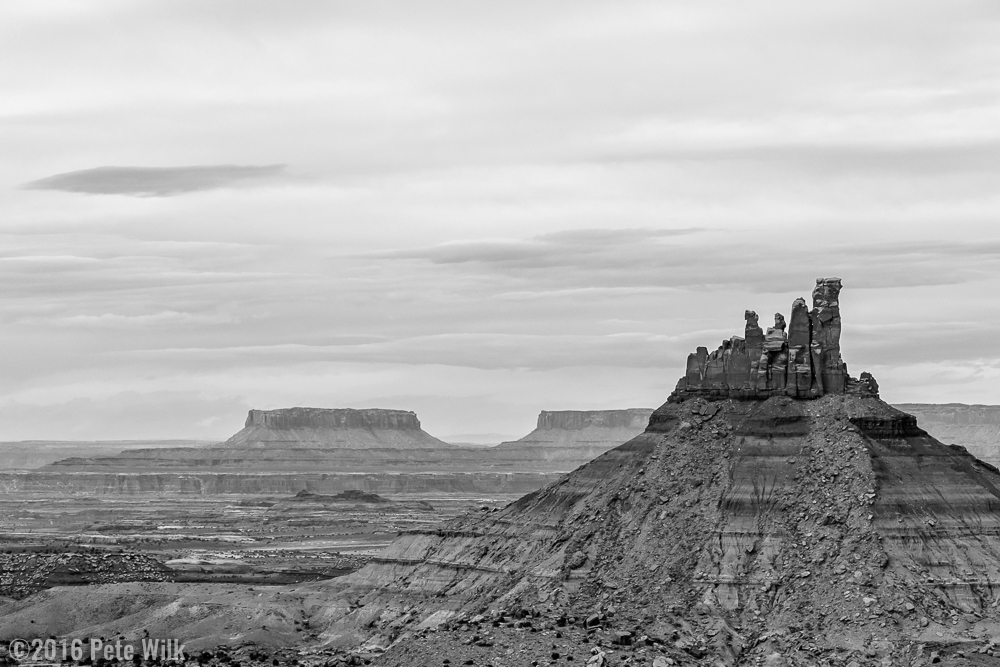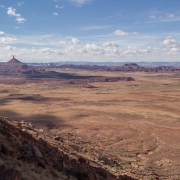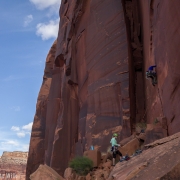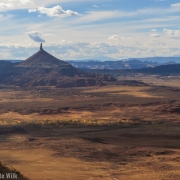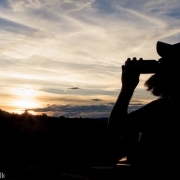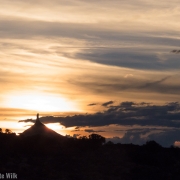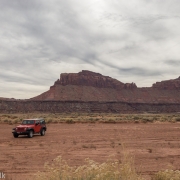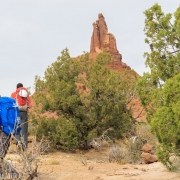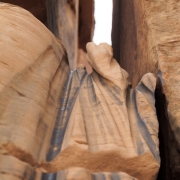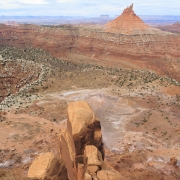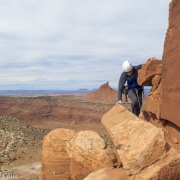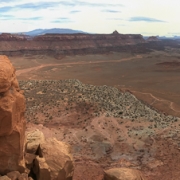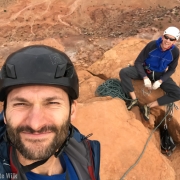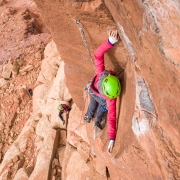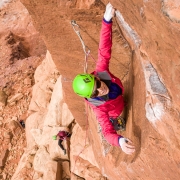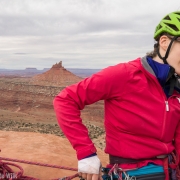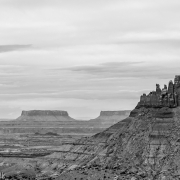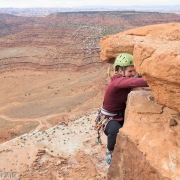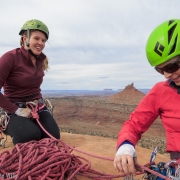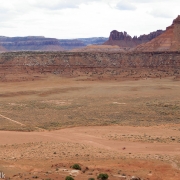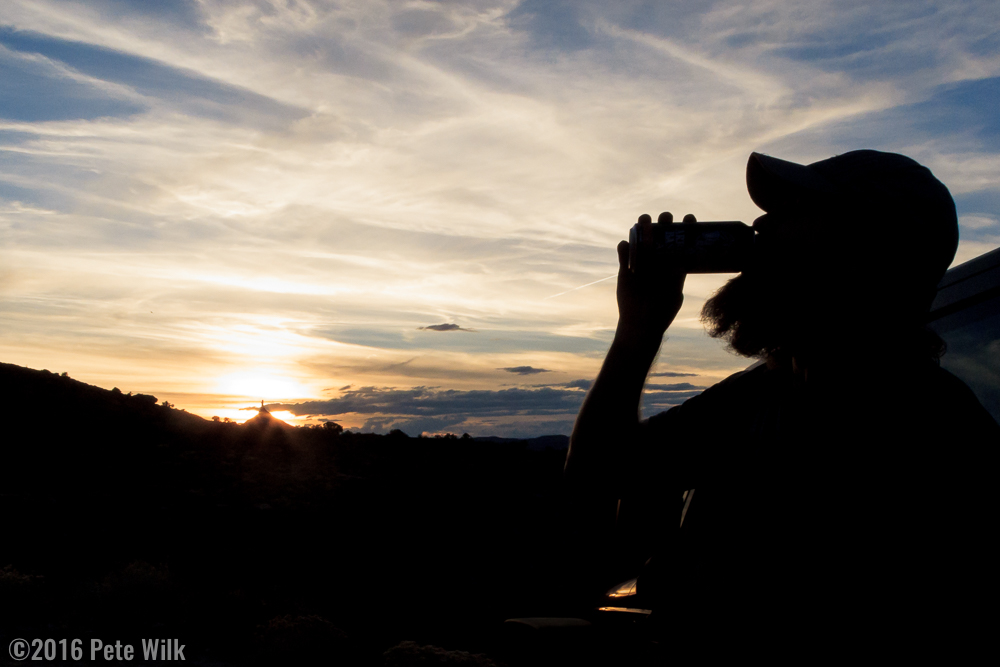
October 29-30, 2016
Indian Creek is a world renowned climbing location. Utah’s stunning desert scenery, endless sandstone splitter cracks and the piles and piles of cams to get up them. Despite this I’ve had a conflicted opinion of the area. I don’t frequent Indian Creek as much as some and the last time was almost a year ago. There are a number of reasons for my critical view of the Creek and each time I go down there my feelings are reinforced.
First, and perhaps the least popular reason why I don’t sing from the mountain tops about how good the creek is: monotony. Who loves a splitter crack, everyone right? Sure. As awesome as perfect hands sounds for 130′, once you’ve done it, it sort of loses its novelty. Generic Crack (5.10-) and Supercrack (5.10) are a good examples. My Creek aficionado friends don’t bother with these routes. Jam-jam torque-torque, rinse and repeat. Does that mean that I don’t want to climb a crack like that? No, but I don’t want to do it every weekend between October and the end of November. “But there are so many other sizes of crack, and it is rare that a route takes only one size cam for its entirety, Pete!” Very true. However when the pro list is 5-#1, 4-#2, 2-#3. You can’t tell me there is a whole lot of variety on the route. As the saying goes “variety is the spice of life” some variability makes things interesting. How much fun would a treadwall with a hand crack be? Not much fun in my opinion.
“Working out the beta” for a route is something that rarely happens in the Creek. For sure there are the occasional routes with some face holds, a wide bit, or a changing corner, that require some thought. I did a route called Funny Farm (5.11+) during this trip which fit this description. A dwindling finger tip crack in a left facing corner has a bolt once the crack disappears. None in our party could figure out the beta to work through this section. We all aided on the bolt and pulled through that spot. To the best we could tell it involved a hip scum to stem transition none of us could do. This type of climb is in a small minority at the Creek.
In my opinion, climbing at the Creek doesn’t make you a better climber. It makes you better at climbing splitter desert cracks. There is certainly some carryover to other rock types. If you can ring-lock in sandstone, then the same move on granite will be a bit easier. However the applicability to other rock types is minimal in my opinion. No one I know who can get themselves up a 5.12 finger crack in the Creek can bring that accomplishment to a 5.12 granite crack–that is unless they are already a 5.12 climber across the board. If you’re sending 5.10 or 5.11 on granite, and you get up a 5.12 in the Creek doesn’t mean you have a chance on a 5.12 granite finger crack. For many years I was focused on traditional climbing and eschewed clipping bolts. I’ve realized that the best and most well rounded climbers I know aren’t Creek fanatics, they clip bolts on limestone, plug gear on granite, climb ice, pull cobbles in Maple, and spend the occasional weekend in the Creek. Diversity in climbing increases your repertoire of skills to succeed in more areas. The more climbing areas that are accessible to you, the more fun you can have.
Crowds. As the pejorative saying goes, “Indian Creek, best crag in Colorado.” Or “How do you know it is springtime in the Creek? All the license plates turn green.” Colorado’s license plate is green mountains silhouette against a white sky. In the 4 years of climbing in the Creek the crowds have gotten worse–from Colorado and Utah. Many of the weekends I’ve been there are popular weekends anywhere, Halloween and Thanksgiving. However the crowds are increasing, just as they are across the climbing world everywhere. The blessing and curse of increased popularity in climbing. For areas of like Indian Creek with limited oversight this is a big problem.
Just getting to a crag is a problem. Limited, usually unmaintained, and certainly unmanaged parking at most crags creates a cluster fuck of parking. Cars parked all cattywampus, once you’ve made the typically semi gnarly drive out to a particular crag and there’s already seven cars you are kind of committed to climbing in that area. So you park in the sagebrush, as little as you can anyway, and hump up to the crag. As you hike up you see another Tacoma pull in next to you, or across some dubious spot that will make it difficult for the existing vehicles to get out.
Once you get up to the crag the next crux is confronted–finding a route to climb. While Mountain Project says there’s about 1,000 routes in the Creek it is rare you can walk up to any given crag and have your pick of the routes. Since the ante to climb at the Creek is 5.10, there are very few routes easier than that, and not many people can climb 5.12 at the Creek, the crowds get compressed into the 5.10-.11 range. Hours long top rope queues from groups of people with five, six, or seven people in them–which I have been guilty of too. Since the party of seven only has maybe two leaders it means that anything they climb will be taken for a couple hours or more. Many crags have much more undeveloped climbable terrain too. I’d be willing to bet that they aren’t developed because many of the lines aren’t quite as splitter, diverging from the romantic ideal of Indian Creek. Route development is a thankless, difficult, and expensive activity. More choices, perhaps even expanded into the moderate grades, wouldn’t solve anything though. If more climbs were available, especially moderates, it would mean increased attendance, which is sort of not possible given the limited parking.
Almost no one day trips the Creek. From Salt Lake it is 5.5 hours if you don’t have traffic. More typically on a Friday afternoon it will be 6-6.5 hours with traffic, food, and gas stops. From Colorado it is shorter, Grand Junction climbers only drive about 2.5 hours. Since very few are there for only the day it means that everyone else has to stay somewhere. Creek Pasture, Superbowl, and Hamburger Rock are the “easy” camping areas to get into. These fill up the quickest on a good weekend since they require neither a high clearance vehicle nor skills to drive a normal passenger car off-road. Hamburger Rock has charged a fee for a while, but as of September 1, 2016 Superbowl and Creek Pasture are charging as well. Some of the entitled climbing community think that this outrageous [1], [2], [3]. Apparently construction and maintenance of sites, campground roads, fire rings, and most importantly toilets, is something that doesn’t require money. Saying that taxes should take care of this is a naive position to take. Users must financially support their recreational areas directly.
While the fees haven’t been in place long, my experience this weekend has me wondering how long it will take before there is a major issue with camping in the Creek. Since less people are interested in paying the $5/night to camp at the easy campgrounds they will migrate to more difficult, but free areas. Bridger Jacks camping requires either higher clearance or some skill in driving off-road so it fills up a little slower, but will still be pretty full on any given weekend. This weekend it was very full, with most sites having 2-3 cars or more. In addition to this the rising popularity of camper vans has people staying in non-camping parking areas such as the Beef Basin lot. Arguably since there’s no tent it should be fine for a van to stay overnight in a parking lot like that. However, when there’s a dozen or more vans and sleeper-cap trucks overnight in the lot, how long will it be before there’s an access problem? Similarly I witnessed large groups of people camping at trailheads. Specifically this was at the first parking area for Cliffs of Insanity. There were about 4-5 vehicles with with folding tables lined up like a buffet line, hardly low impact or Leave No Trace compliant.
All dispersed camping requires full pack-in pack-out, including solid human waste. I’d be willing to bet there is a very small percentage of users doing this. I will be quick to admit that I have dug catholes when I couldn’t wait for a proper toilet. However, I have recently realized that WAG bags aren’t expensive nor all that gross to use, even multiple times. For those not willing to buy them, there are homemade alternatives. With hundreds of people on any given weekend how long will it be before there’s a human waste problem? I’m sure some people might argue there’s already a problem in this area.
So enough bitching. Utah’s desert areas are an amazing place. Clearly that is why people visit. Some of these issues may improve if the Bears Ears National Monument happens. I am not familiar enough with that plan to comment, but the continued trend in the Creek doesn’t bode well for access. The solution is more respect for the limited resource, which means financially supporting the area via camping fees, Access Fund membership, following Leave No Trace practices, and perhaps not making quite so many trips there.

